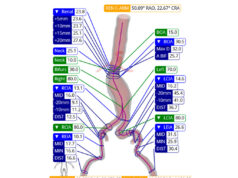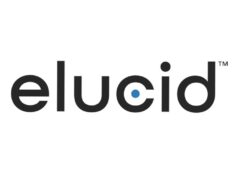Choosing Wisely was initiated by the American Board of Internal Medicine Foundation to provide recommendations to both patients and physicians about the evaluation and management of common diseases. SVS is participating in this program and the SVS Public and Professional Outreach Committee has prepared “best practices” in the evaluation and management of several common vascular diseases. These recommendations were approved by the SVS Executive Committee for release to the Choosing Wisely campaign.
While these recommendations are a good starting point, our society needs to continue the conversation begun by the 2014 Stanley E. Crawford Critical Issues Forum about the appropriate care of all vascular diseases. We need to:
• pursue a more in-depth analysis of appropriate use of vascular surgery procedures;
• ask the Clinical Practice Council to help determine the optimal site to provide high quality, cost-effective treatment of each vascular disease; and
• develop new tools that will help primary care teams be more attuned to patients with vascular issues.
Taking the high road in patient care means making sure that patients receive the most appropriate care, provided in the most appropriate setting, by those with appropriate training. The five Choosing Wisely recommendations that follow are an excellent beginning.
Peter F. Lawrence, MD
President, Society for Vascular Surgery
Five things physicians and patients should question
Avoid routine venous ultrasound tests for patients with asymptomatic telangiectasia.
Routine testing could result in unnecessary saphenous vein ablation procedures. Telangiectasia treatment can be considered for cosmetic improvement unless associated with bleeding. Telangiectasia are usually asymptomatic blemishes found on the legs but can also involve other areas such as the face and chest. They almost never cause pain and seldom bleed. They are treated primarily for cosmetic purposes by injection or laser therapy. Although occasionally associated with disorders of the larger leg veins (saphenous, perforator and deep), treating the underlying leg vein problem is seldom necessary. Even if an incompetent saphenous vein is identified and treated by ablation or removal, the telangiectasia will still remain. Since the saphenous vein can be used as a replacement artery for blocked coronary or leg arteries, it should be preserved whenever possible. Therefore, an ultrasound test to diagnose saphenous vein or deep venous incompetence is not required when the CEAP (a classification system based on clinical severity, etiology, anatomy and pathophysiology) is less than 2.
Avoid routine ultrasound and fistulogram evaluations of well-functioning dialysis accesses.
Unfortunately, angioaccess for hemodialysis fails at a high annual rate. Therefore, it is appropriate to evaluate access sites with an ultrasound test whenever they appear to be malfunctioning. However, this is only necessary if the dialysis center notices unusual function on the machine (flow rates <300 or >1000, recirc >10%), abnormal bleeding after dialysis, or other clinical indicators such as enlarging pseudoaneurysm, pain, and/or suspected graft infection. Under some circumstances, a fistulogram may be required. However, these invasive procedures have slight risks and are more costly than ultrasound studies. Therefore, they should not be performed routinely but only when clinically indicated and usually after a confirmatory ultrasound test. Performing ultrasounds at set intervals when the function of the access is normal is not needed.
Don’t use IVC filters as primary prevention of pulmonary emboli in the absence of an extremity clot or prior pulmonary embolus.|
The inferior vena cava (IVC) filter is placed during a minimally invasive procedure which has low, but not zero, risk. Long-term placement of an IVC filter can lead to other complications such as organ injury or vessel clotting. IVC filters should not be used as primary form of prophylaxis of pulmonary embolus if no extremity clot exists, even in trauma and neurosurgery patients who cannot receive anticoagulants. Other means, especially leg compression devices, can be helpful in preventing deep vein thrombosis (DVT). An IVC filter may be appropriate in cases with high-risk features such as acute DVT, prior DVT, history of prior pulmonary embolus or other high-risk features.
Don’t use interventions (including surgical bypass, angiogram, angioplasty or stent) as a first line of treatment for most patients with intermittent claudication.
A trial of smoking cessation, risk factor modification, diet and exercise, as well as pharmacologic treatment should be attempted before any procedures. When indicated, the type of intervention (surgery or angioplasty) depends on several factors.
Intermittent claudication can vary due to several factors. The life-time incidence of amputation in a patient with claudication is less than 5% with appropriate risk factor modification. Procedures for claudication are usually not limb-saving, but, rather, lifestyle-improving. However, interventions are not without risks, including worsening the patient’s perfusion, and should be reserved until a trial of conservative management has been attempted. Many people will actually realize an increase in their walking distance and pain threshold with exercise therapy. In cases where the claudication limits a person’s ability to carry out normal daily functions, it is appropriate to intervene. Depending upon the characteristics of the occlusive process, and patient comorbidities, the best option for treatment may be either surgical or endovascular.
Avoid use of ultrasound for routine surveillance of carotid arteries in the asymptomatic healthy population at any time.
The presence of a bruit alone does not warrant serial duplex ultrasounds in low-risk, asymptomatic patients, unless significant stenosis is found on the initial duplex ultrasound. The presence of asymptomatic severe carotid artery disease in the general population yields a risk of neurologic events which is <2%. Even in patients who have a bruit, if no other risk factors exist, the incidence is only 2%. Age (over 65), coronary artery disease, need for coronary bypass, symptomatic lower extremity arterial occlusive disease, history of tobacco use and high cholesterol would be appropriate risk factors to prompt ultrasound in patients with a bruit. Otherwise, these ultrasounds may prompt unnecessary and more expensive and invasive tests, or even unnecessary surgery. In general population-based studies, the prevalence of severe carotid stenosis is not high enough to make bruit alone an indication for carotid screening. With these facts in mind, screening should be pursued only if a bruit is associated with other risk factors for stenosis and stroke, or if the primary care physician determines you are at increased risk for carotid artery occlusive disease.
Sources
Khilnani NM, Min RJ. Imaging of venous insufficiency. Semin Intervent Radiol. 2005 Sep;22(3):178-84.Chiesa R, Marone EM, Limoni C, Volontè M, Petrini O. Chronic venous disorders: correlation between visible signs, symptoms, and presence of functional disease. J Vasc Surg. 2007 Aug;46(2):322-30.
Navuluri R, Regalado S. The KDOQI 2006 Vascular Access Update and Fistula First Program Synopsis. Semin Intervent Radiol. 2009 Jun;26(2):122-4.
Sidawy AN, Spergel LM, Besarab A, Allon M, Jennings WC, Padberg FT Jr, Murad MH, Montori VM, O’Hare AM, Calligaro KD, Macsata RA, Lumsden AB, Ascher E; Society for Vascular Surgery.
The Society for Vascular Surgery: clinical practice guidelines for the surgical placement and maintenance of arteriovenous hemodialysis access. J Vasc Surg. 2008 Nov;48(5 Suppl):2S-25S.
Upadate on Dialysis Intervention: surveillance of hemodialysis vascular access. Semin Intervent Radiol. Jun 2009; 26(2): 130–8.
Kearon C, Akl EA, Comerota AJ, Prandoni P, Bounameaux H, Goldhaber SZ, Nelson ME, Wells PS, Gould MK, Dentali F, Crowther M, Kahn SR; American College of Chest Physicians. Antithrombotic therapy for VTE disease: antithrombotic therapy and prevention of thrombosis, 9th ed: American College of Chest Physicians Evidence-Based Clinical Practice Guidelines.
Chest. 2012 Feb;141(2 Suppl):e419S-94S.
Adam DJ, Beard JD, Cleveland T, Bell J, Bradbury AW, Forbes JF, Fowkes FG, Gillepsie I, Ruckley CV, Raab G, Storkey H; BASIL trial participants. Bypass versus angioplasty in severe ischaemia of the leg (BASIL): multicentre, randomised controlled trial. Lancet. 2005 Dec 3;366(9501):1925-34.
Norgren L, Hiatt WR, Dormandy JA, Nehler MR, Harris KA, Fowkes FG; TASC II Working Group. Inter-Society Consensus for the Management of Peripheral Arterial Disease (TASC II). J Vasc Surg. 2007 Jan;45 Suppl S:S5-67.
Ricotta JJ, Aburahma A, Ascher E, Eskandari M, Faries P, Lal BK; Society for Vascular Surgery. Updated Society for Vascular Surgery guidelines for management of extracranial carotid disease. J Vasc Surg. 2011 Sep;54(3):e1-31
Jacobowitz GR, Rockman CB, Gagne PJ, Adelman MA, Lamparello PJ, Landis R, Riles TS. A model for predicting occult carotid artery stenosis: screening is justified in a selected population. J Vasc Surg. 2003 Oct;38(4):705-9.
Qureshi AI, Janardhan V, Bennett SE, Luft AR, Hopkins LN, Guterman LR. Who should be screened for asymptomatic carotid artery stenosis? Experience from the Western New York stroke screening program. J Neuroimaging. 2001 Apr;11(2):105-11.
How This List Was Created
The Society for Vascular Surgery (SVS) formed a task force to gather initial recommendations for a list of procedures that should not be performed, performed rarely or performed only under certain circumstances.
These draft recommendations were then sent to the Public and Professional Outreach Committee, which refined them before presenting them to its reporting council, the Clinical Practice Council. The Council reviewed the citations and ensured all recommendations aligned with SVS Clinical Practice Guidelines before submitting them to the Executive Committee of the SVS Board of Directors for approval.
You can review the society’s conflict of interest and disclosure policy at www.vsweb.org/COIpolicy.
About SVS
The Society for Vascular Surgery advances the care and knowledge about vascular disease, which affects the veins and arteries of the body, to improve lives everywhere. It counts more than 5,000 medical professionals worldwide as members, including surgeons, physicians, and nurses. For more information or to see other lists of Five Things Physicians and Patients Should Question, visit www.choosingwisely.org.
About the ABIM Foundation
The mission of the ABIM Foundation is to advance medical professionalism to improve the health care system. We achieve this by collaborating with physicians and physician leaders, medical trainees, health care delivery systems, payers, policymakers, consumer organizations and patients to foster a shared understanding of professionalism and how they can adopt the tenets of professionalism in practice.












